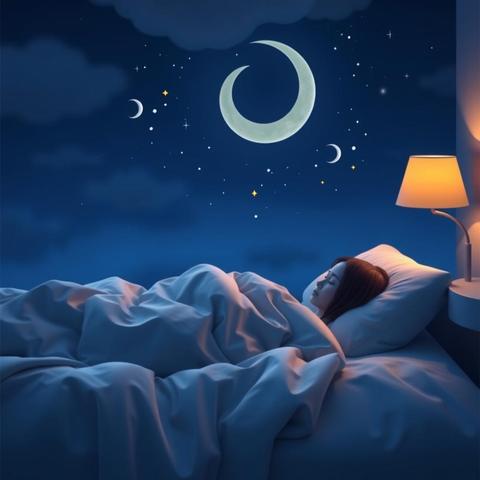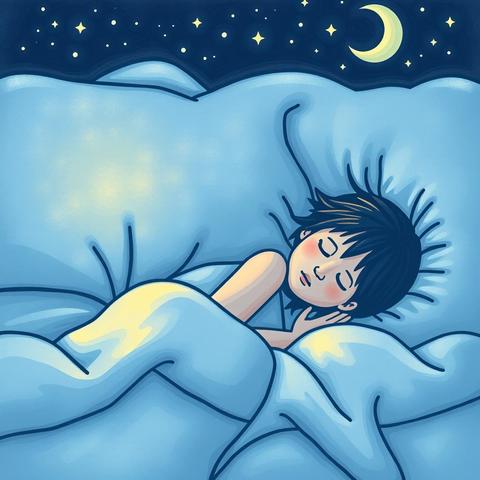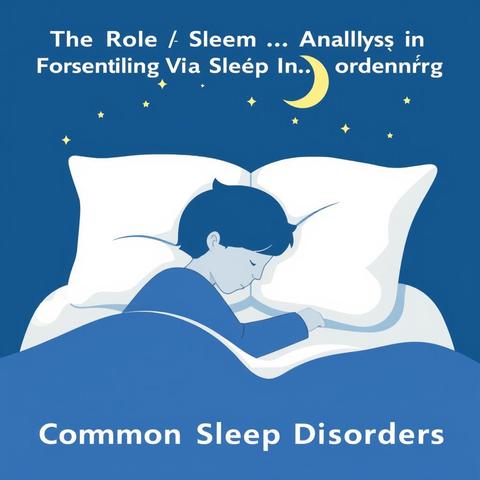Do you ever wake up feeling like you haven’t truly rested, despite spending hours in bed? A restless night can leave you feeling drained, impacting your mood, focus, and overall well-being. Many people experience occasional sleep disturbances, but when these issues become persistent, they can point to a wider range of common sleep disorders. This article explores some of the most prevalent sleep disorders, delving into their causes, symptoms, and effective treatment strategies. Understanding these disorders is the first step towards reclaiming restful nights and a healthier, more vibrant life.
Understanding the Landscape of Common Sleep Disorders

Sleep is a fundamental pillar of our physical and mental health. Yet, millions struggle with various sleep disorders, impacting their quality of life significantly. Let’s explore some of the most common:
Insomnia: The Persistent Struggle for Sleep
Insomnia is characterized by difficulty falling asleep, staying asleep, or experiencing both. This isn’t just about occasional sleepless nights; it’s a chronic condition that significantly disrupts your sleep-wake cycle. Insomnia can stem from various factors, including stress, anxiety, medical conditions, medication side effects, and poor sleep hygiene.
-
Symptoms: Difficulty initiating sleep, frequent awakenings during the night, early morning awakenings, unrefreshing sleep, daytime fatigue, difficulty concentrating, irritability.
-
Causes: Stress, anxiety, depression, medical conditions (e.g., chronic pain, thyroid problems), certain medications, caffeine and alcohol consumption, irregular sleep schedules, poor sleep environment.
- Common Sleep Disorders: Understanding and Overcoming Sleep Disturbances
- Healthy Sleep Habits: Unlocking the Power of Dreams for Personal Growth
- Sleep and Mental Health: Unlocking the Secrets of Your Dreams
- Meditation and Relaxation Techniques for Improved Sleep and Dream Recall
- Stress and Sleep: Unlocking the Secrets Your Dreams Reveal
-
Treatment: Cognitive Behavioral Therapy for Insomnia (CBT-I), relaxation techniques (meditation, deep breathing), sleep hygiene improvements (consistent sleep schedule, creating a relaxing bedtime routine), medication in some cases (only under a doctor’s supervision).
Sleep Apnea: Interrupted Breathing During Sleep
Sleep apnea involves repeated pauses in breathing during sleep. These pauses, which can last from a few seconds to minutes, can lead to brief awakenings, often without the individual being consciously aware of them. This fragmented sleep results in daytime sleepiness, fatigue, and other health complications.
-
Obstructive Sleep Apnea (OSA): The most common type, caused by a blockage in the airway during sleep. Often associated with obesity, enlarged tonsils, and nasal congestion.
-
Central Sleep Apnea (CSA): The brain fails to send proper signals to the muscles that control breathing. Can be associated with neurological disorders or heart conditions.
-
Complex Sleep Apnea Syndrome (CSAS): A combination of OSA and CSA.
-
Symptoms: Loud snoring, gasping or choking during sleep, daytime sleepiness, morning headaches, difficulty concentrating, irritability, high blood pressure.
-
Treatment: Continuous Positive Airway Pressure (CPAP) therapy, oral appliances, surgery (in some cases), weight loss (if applicable), positional therapy.
Restless Legs Syndrome (RLS): The Uncomfortable Urge to Move
Restless legs syndrome is a neurological disorder characterized by an irresistible urge to move the legs, usually accompanied by uncomfortable sensations in the legs and feet. These sensations are often worse at rest or at night, interfering with sleep.
-
Symptoms: Uncomfortable sensations in the legs and feet, irresistible urge to move legs, worsened sensations at rest or night, temporary relief with movement, worse symptoms in the evening.
-
Causes: Iron deficiency, pregnancy, kidney failure, nerve damage, some medications.
-
Treatment: Dopamine agonists (medications), iron supplementation (if deficient), lifestyle changes (regular exercise, avoiding caffeine and alcohol), pain management techniques.
Narcolepsy: Excessive Daytime Sleepiness and Sleep Attacks
Narcolepsy is a chronic neurological disorder that affects the sleep-wake cycle. Individuals with narcolepsy experience excessive daytime sleepiness, often including sudden sleep attacks, even during activities like conversations or driving.
-
Symptoms: Excessive daytime sleepiness, cataplexy (sudden muscle weakness triggered by strong emotions), sleep paralysis (inability to move during sleep onset or waking), hypnagogic hallucinations (vivid hallucinations during sleep onset), fragmented nighttime sleep.
-
Causes: Autoimmune disorder that targets hypocretin-producing neurons in the brain.
-
Treatment: Stimulant medications, sodium oxybate, lifestyle adjustments (regular sleep schedule, avoiding sleep-inducing activities during the day), psychological support.
Sleepwalking (Somnambulism): Moving While Asleep
Sleepwalking involves rising from bed and walking or performing other activities while still asleep. Individuals may appear awake but are not aware of their actions. Sleepwalking is most common in children, but can occur in adults as well.
-
Symptoms: Walking or performing other activities during sleep, lack of awareness during episodes, amnesia of the episode upon waking, typically occurs during the first third of the night.
-
Causes: Genetics, sleep deprivation, fever, stress, sleep disorders (e.g., sleep apnea), certain medications.
-
Treatment: Addressing underlying sleep disorders, maintaining a regular sleep schedule, creating a safe sleep environment, avoiding sleep-disrupting substances.
Night Terrors: Frightening Episodes During Sleep
Night terrors are episodes of screaming, thrashing, and fear during sleep, typically occurring during the first few hours of sleep. Individuals experiencing night terrors are usually difficult to awaken and have little or no memory of the event upon waking. Unlike nightmares, night terrors happen during deep non-REM sleep.
-
Symptoms: Screaming, thrashing, fear, rapid heartbeat, sweating, difficulty waking, little or no memory of the episode.
-
Causes: Sleep deprivation, fever, stress, sleep disorders (e.g., sleep apnea), certain medications.
-
Treatment: Addressing underlying sleep disorders, maintaining a regular sleep schedule, creating a safe sleep environment, minimizing stress.
The Hidden Meanings Behind Sleep Disturbances: A Deeper Look

While medical interventions are vital for addressing the physical symptoms of sleep disorders, understanding the potential psychological and emotional underpinnings can offer a more holistic approach to healing. Many sleep disorders are intertwined with stress, anxiety, and unresolved emotional issues. For example, insomnia might reflect underlying anxieties that prevent the mind from settling down for sleep. Similarly, sleepwalking could sometimes be linked to subconscious attempts to process traumatic experiences or unresolved conflicts.
The Role of Dream Analysis in Fostering Personal Growth and Sleep Improvement

Dream analysis can provide valuable insights into the underlying emotional and psychological factors contributing to sleep disturbances. Recurring dreams, vivid nightmares, or even the absence of dreams can offer clues about unresolved emotions, subconscious anxieties, and areas requiring attention. Dream work, combined with therapeutic interventions, can help address these underlying issues, potentially leading to improvements in sleep quality and overall well-being.
Practical Advice for Improving Sleep Quality and Addressing Sleep Disorders
- Maintain a consistent sleep schedule: Go to bed and wake up at the same time every day, even on weekends, to regulate your body’s natural sleep-wake cycle.
- Create a relaxing bedtime routine: Engage in calming activities before bed, such as reading, taking a warm bath, or listening to relaxing music. Avoid screen time close to bedtime.
- Optimize your sleep environment: Make sure your bedroom is dark, quiet, and cool. Invest in a comfortable mattress and pillows.
- Get regular exercise: Physical activity can improve sleep quality, but avoid intense workouts close to bedtime.
- Manage stress: Practice stress-reducing techniques such as meditation, yoga, or deep breathing exercises.
- Limit caffeine and alcohol intake: Caffeine and alcohol can interfere with sleep.
- Get sunlight exposure during the day: Sunlight helps regulate your body’s natural sleep-wake cycle.
- Seek professional help: If you are experiencing persistent sleep problems, consult a healthcare professional or sleep specialist for diagnosis and treatment.
The Power of Dream Therapy in Addressing Underlying Emotional Issues
Dream therapy provides a unique pathway for exploring the emotional landscape that often underlies sleep disorders. By analyzing the symbolic language of dreams, we can uncover hidden patterns, repressed emotions, and unresolved conflicts that may be contributing to sleep disturbances. This process, guided by a trained dream therapist, can lead to greater self-awareness, emotional regulation, and ultimately, improved sleep.
Dream Therapy Now: Your Partner in Achieving Restful Sleep and Self-Discovery
At Dream Therapy Now, we understand the profound impact of sleep disorders on your overall well-being. We offer comprehensive dream therapy and sleep improvement techniques, tailored to your individual needs and circumstances. Our expert team combines the latest scientific findings with a compassionate and holistic approach, empowering you to overcome sleep challenges and unlock your full potential. Contact us today to begin your journey towards restful nights and a more fulfilling life. Call us at [Phone Number] or email us at info@dreamtherapynow.com. We are located at 143 Horizon Dr, Bedford, NH 03110.
(Remember to replace “[Phone Number]” with the actual phone number for Dream Therapy Now.)
Dive into our blog to discover a wealth of content that will illuminate the significance of your nocturnal adventures and guide you through the labyrinth of dream symbolism. Impeccable Dream hopes this guide was helpful! If you want to see other blog posts about Sleep Hygiene Practices, here are some that may be of interest to you.